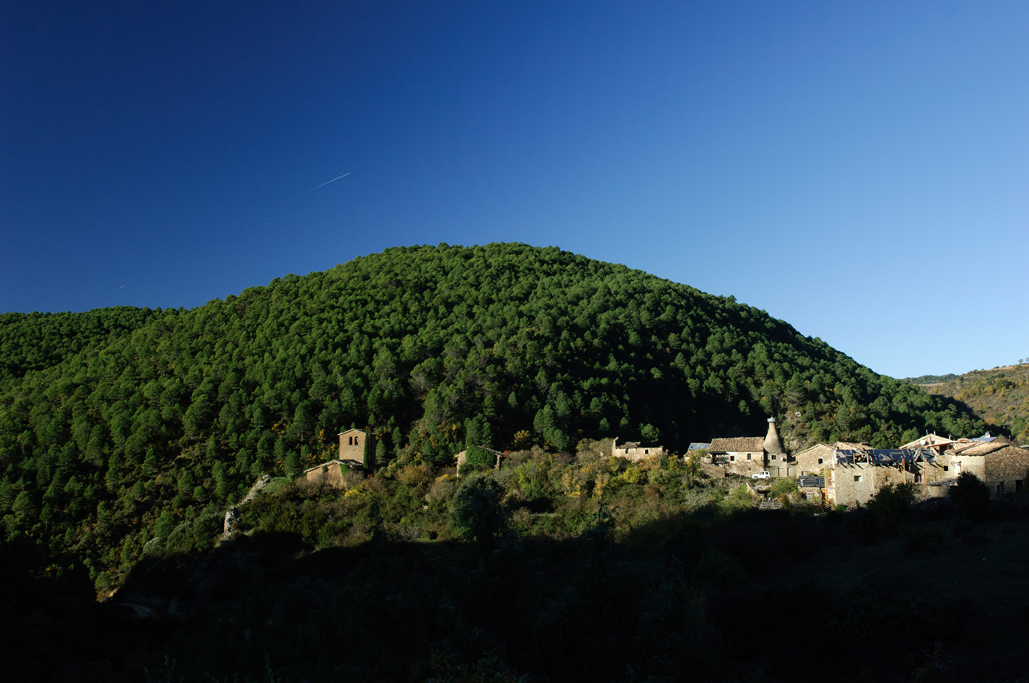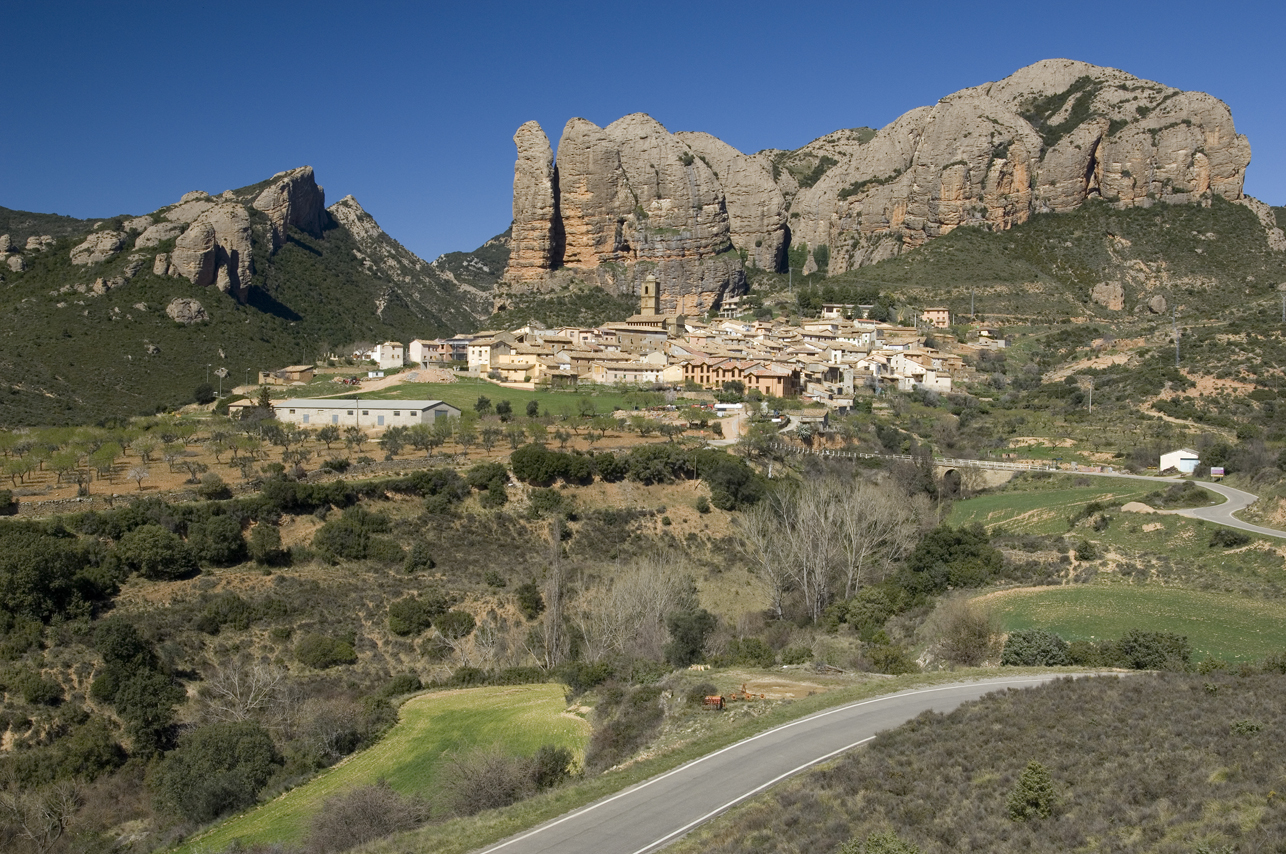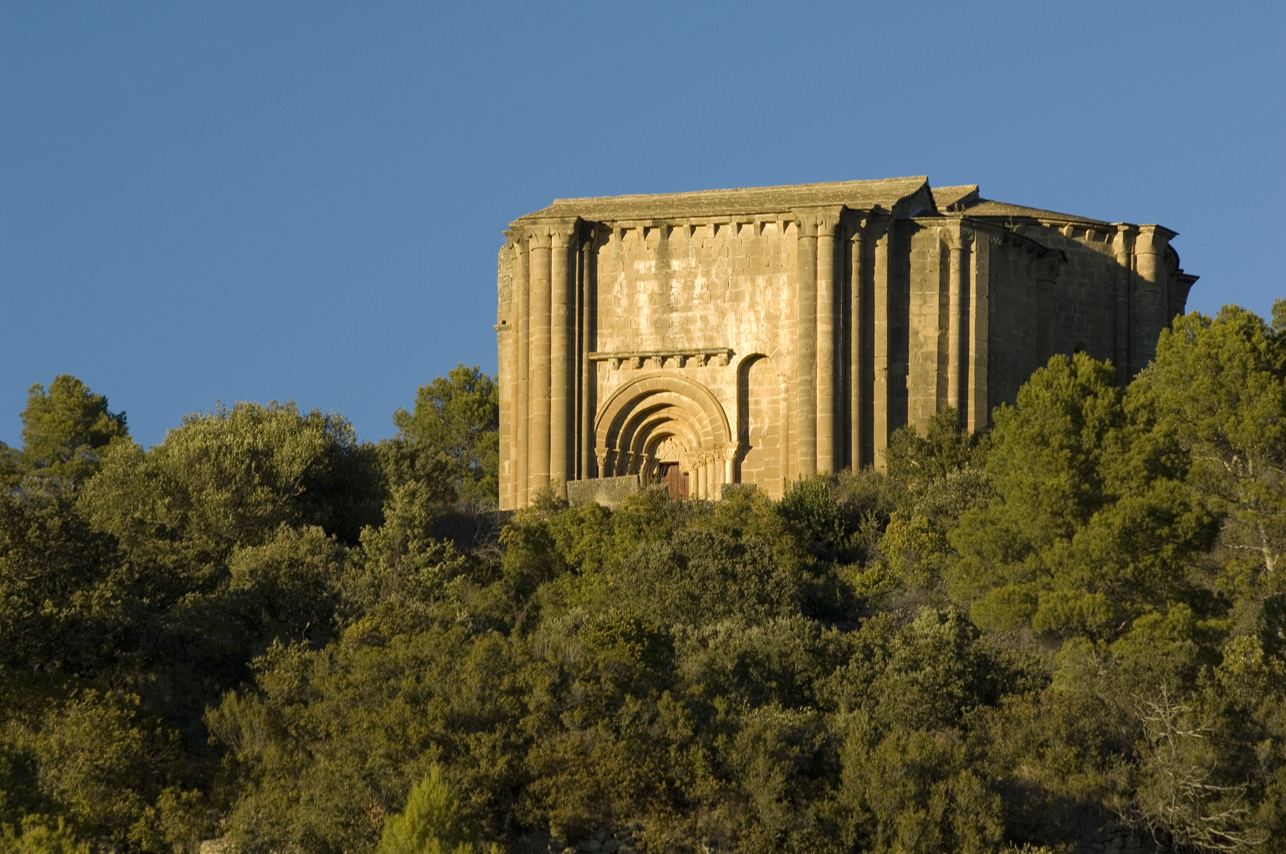
San Felices is a small but charming village about five kilometers from the seat of the municipality to which it belongs, Agüero.
It is accessed by a road in good condition and greets visitors with a postcard-perfect view of its Church of San Estaban, a Romanesque built that underwent several reforms in the 17th century.
The houses hug a promontory over the Artaso ravine and are surrounded by lush strawberry trees, a treat for hikers and anyone who loves nature and the outdoors.
The nearby location of villages like Fuencaldearenas leads to the conclusion that San Felices was once part of a natural path that ran through Murillo de Gállego – Agüero – San Felices – Liso, and Biel, up to Sos del Rey Católico near Navarre. All are highly strategic points that likely once had castles and watchtowers. The trail is letter popular now, although it is used by mountain bikers.
Several charming sights are nearby: the Chapel of San Esteban, also in the Agüero municipality, and to the waterfall of San Felices, just 10 minutes away.

Getting to Agüero is a delicious pleasure, particularly along the winding road guaranteed to surpise new visitors: after several curves leading to the village, the last curve reveals the awe-inspiring profile of Agüero in the distance.
Its mallos, imposing stone monoliths, provide a postcard-perfect backdrop, framing the village against the sky.
The houses are laid out in terraces 696 meters above sea level, creating a Medieval-style layout with the Romanesque Parish Church of San Salvador, with its stunning multiarched doorway, in the center; a memorable history that can be traced back in the coats of arms that decorate the doors in the village.
The village's rock formations feature the iconic Peña Sola, a monolith created when a large rock split, its western side reaching 200 meters into the air, making it and the surrounding rock formations perfect for climbing. Agüero also offers a range of additional adventure sports, not to mention outstanding ornithological tourism, as the surrounding area is home to scavenging birds and birds of prey.

And speaking of the surrounding area...the Church of Santiago, located a few kilometers from the village on a hill, deserves special mention. One of Huesca's Romanesque gems, the work of a great master, Master Agüero, whose work can be traced through other monuments in the area, including the cloister of San Pedro el Viejo in Huesca and San Juan de la Peña.
Its approximately 173 inhabitants celebrate festivals and events year-round: on January 20th in honor of St. Sebastian, the “d’as Mascaretas” festival (traditional Carnival) in February in honor of St. Blaise, and its annual festival to celebrate St. Roch on August 16th.